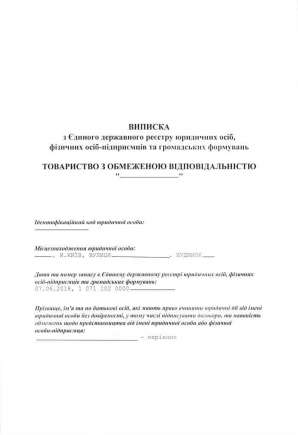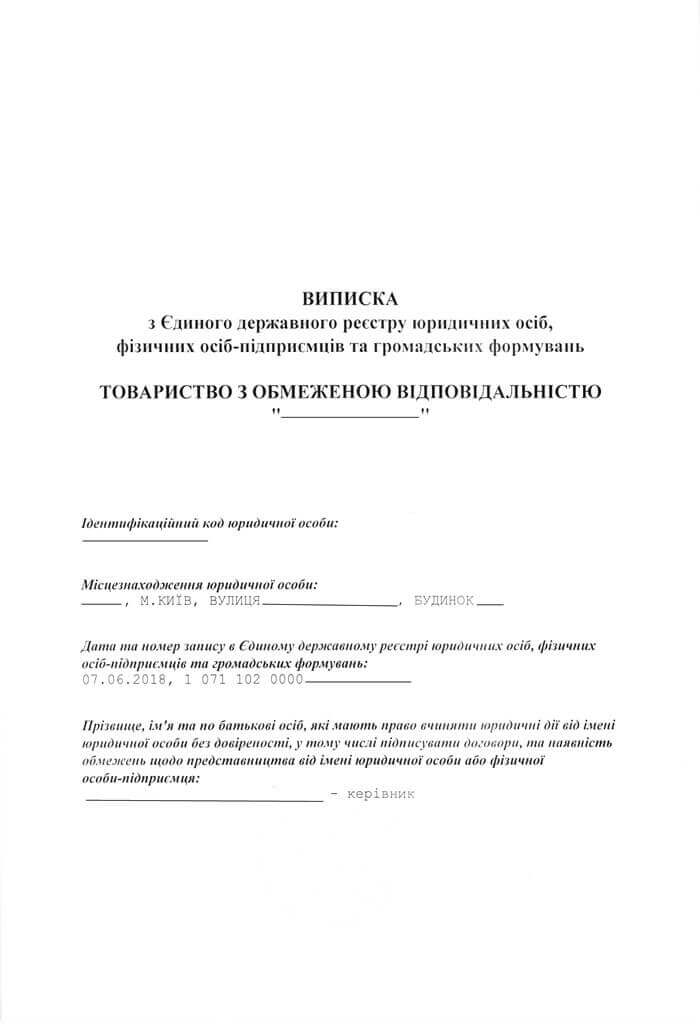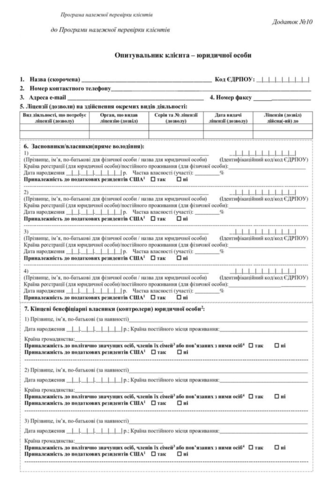How to use your corporate account in Ukraine?
Cost of services:
Reviews of our Clients
... our work on joint projects assured us of your high level of professionalism
Businesses execute their financial transactions using monetary funds, and in the modern commercial landscape, these transactions are largely non-cash, utilizing corporate funds held in the company’s bank (corporate) account. Managers can monitor the movement of these funds around the clock using internet banking or mobile apps.
Setting up a bank account is a fairly simple process, and our team of experts can guide you through it.
Once a bank account is opened, numerous clients often have questions about managing their corporate account funds. Common inquiries include:
- What are the legal ways to fund a bank account?
- What kinds of payments can be made from the bank account?
- How quickly will client payments be credited to the account, or when will suppliers receive my payments?
- Are there limits on the amount for transactions?
- Is it possible to make online payments for goods or services using company funds, among others?
Our experience includes establishing companies and their corresponding accounts for international clients, where we not only organized the process but also provided comprehensive instructions on using the account. We will detail this expertise in our article.
Moreover, for a more streamlined approach, our company offers comprehensive payroll, accounting, and HR services for businesses operating in Ukraine. This allows our clients to focus on profit generation in Ukraine without being bogged down by technical details.
You may also like: Opening a Bank Account in Ukraine for Foreigners in Just One Day
How to Deposit Funds into a Corporate Account in Ukraine?
The funds deposited in a company's bank account are primarily for financing the expenses related to the business's operational activities.
Before a company can begin its activities, it must deposit money into its corporate bank account. There are several methods for depositing funds into a corporate account:
1. Capital Contribution: The owner deposits the full amount or a portion of the registered capital into the bank account.
2. Receiving Payment from Customers: This includes payments or subscriptions for services rendered or goods provided.
3. Receiving a Returnable Interest-free Financial Aid: This can come from the owner or another individual/legal entity.
Please note! The deposit of funds into a corporate account should align with the stipulations of current legislation, ensuring that the funds are legally obtained and properly documented.
After the funds are deposited, the company can use them to cover various corporate expenditures. We will elaborate on what qualifies as corporate expenses and how a company can use its funds.
What Expenses Can Be Covered Using a Company's Bank Account Funds?
Expenses integral to a company’s operational activities (the costs essential for its full-fledged functioning) can be paid via non-cash transactions from the corporate account.
Such corporate expenses typically encompass (but are not limited to):
- Paying employee salaries;
- Tax contributions;
- Paying for rental and utilities of office/warehouse spaces;
- Payment for services rendered by subcontractors;
- Expenses for legal, accounting, consulting, auditing services, etc.;
- Purchasing goods, equipment, office supplies, and so on.
Note: The comprehensive list of corporate expenses varies based on the company's business type and its tax registration system.
Our experts can assist in creating a specific list of allowable expenditures for your business.
The key requirement for using these funds is:
- Compliance with current legal regulations;
- Providing documentary proof for each economic operation.
This means that before carrying out any payment, it's crucial to conduct a legal and tax analysis of the transaction to verify the legality of the payment.
Please note! This analysis should be done prior to executing the payment to avoid the risk of penalties or increased tax liabilities.
Let's look at an example of how corporate funds were utilized in the case of one of our clients who provides outstaffing services.
Our client had set up a company and opened a bank account but was unsure about which expenses could be legitimately paid using the company's funds. We developed a financial roadmap for the client, clarifying the categories of money flows:
1. Funding the account involves:
- Contributions from the founder to the share capital;
- Payments for services related to staffing and training;
- Covering the costs of salaries and taxes for outsourced employees;
- Receiving refundable financial assistance.
2. Client’s corporate expenses include:
- Employee salary payments;
- Recruitment service fees;
- Payments for information, consulting, and educational services;
- Accounting and legal service expenses;
- Office rental for administrative staff, including utilities, internet, and telecommunications;
- Operational costs for administrative staff (such as office supplies and office furniture);
- Tax payments and other mandatory contributions.
This roadmap provided the client with a framework to build a financial model for their business, allowing them to project not just cash flows, but also income and expenses in the short term.
You may also like: Alternative Payment Methods for Businesses in Ukraine
Approaches to Using Corporate Funds from an Account (Payment Methods)
There are several methods available for covering corporate expenses, which include:
- Making payments directly from the bank account;
- Paying expenses using a key card;
- Withdrawing cash from a bank and then paying expenses in cash;
- Transferring funds to an employee's corporate card for subsequent expense payments (similar to cash advances for accountability).
Direct Bank Account Payments
This method is the most widespread and straightforward.
Various types of payments, including payments to suppliers, business travel expenses, salaries, and taxes, can be made directly from the bank account.
Example 1: To make a payment to a supplier, the process typically involves:
- Receiving an invoice from the supplier, which includes the necessary banking details for the payment;
- Logging into Internet banking and transferring funds to the supplier’s account as specified in the invoice;
- Obtaining a confirmation document from the supplier that signifies the completion of services or the delivery of goods.
Example 2: For paying an employee's salary, the steps usually are:
- Requesting the employee's IBAN of their bank card (or issuing them a salary bank card linked to your company);
- Transferring the appropriate amount for taxes and salary to the card specified by the employee within the scheduled time frame.
Please note! As of October 1, 2023, financial monitoring by banks is in effect for transactions exceeding 400,000 Ukrainian hryvnias. Therefore, if a company makes a payment to a supplier above this threshold, the bank will not execute the transfer until it receives the necessary supporting documents. Such documents may include (but are not limited to):
- The contract;
- An expense invoice or a service provision act;
- A customs declaration, among other relevant documents.
Managerial Expense Payments Using a Key Card
Digital payments are increasingly popular not only among individuals but also in the business sphere. This is where the key card is utilized.
A key card is a company’s bank card issued only to the account holder who possesses the right of first signature (typically the director).
This card is provided to the owner upon opening the bank account. Using this card, the company's director can pay for the company's expenses both online and in physical stores.
However, the director must be diligent in documenting the transactions with a key card, which involves:
- Preparing an advance report;
- Obtaining confirming documentation for the purchase from the supplier, such as a receipt, invoice, goods dispatch note, service provision act, or another primary document.
The funds available on the key card are equal to the total remaining balance of the organization's funds, allowing the director to set a limit on the card for spending control.
The currency of the key card is the hryvnia.
Please note! The key card is listed in both the company's business cabinet and the personal card list of the director in their personal account. In practice, there have been cases where directors accidentally used the corporate card for personal expenses. Such actions breach the corporate funds usage policy. Nevertheless, there is a remedy for this error that avoids penalties and additional tax assessments, namely:
- The director reimburses the funds to the company's account;
- Compiles a blank advance report detailing the utilization and reimbursement of the funds.
Employee Expense Payments Using a Corporate Card
A corporate card is a bank card issued by an organization to its employees. These cards are usually allocated to employees who often travel on business or use funds for accountable expenses. The corporate card acts as a substitute for distributing cash to employees.
Just like with key card transactions, employees must account for the expenditures made with the corporate card. This requires compiling an advance report and submitting the supporting documentation.
Each corporate card is linked to a separate bank account and is assigned to an individual employee.
Note: All corporate cards are associated with a specific legal entity. Hence, if an employee leaves the company, they can no longer use their corporate card.
To load funds onto a corporate card of this nature, the manager (or another person responsible for payment operations) must transfer money from the main account to the specific corporate card account.
The corporate card can be issued in Ukrainian hryvnias, euros, or dollars.
Please note! Corporate cards in dollars and euros are typically issued by legal entities solely for funding employees' international business trips. Conducting transactions in foreign currency within Ukraine is not allowed.
Withdrawing Cash from a Bank Account
This approach to fund utilization is intricate, but it remains in use by some companies.
The withdrawal of cash is typically employed to subsequently disburse funds to company employees on an accountable basis.
To withdraw cash from a bank, one must:
- Complete an application for reserving a specific amount of funds at the bank for a designated date;
- Visit the bank branch to execute the cash withdrawal.
Once the cash is withdrawn, it needs to be recorded in the bank's cash ledger (an entry made in the Cash Book) and then distributed to employees for accountable use.
Employees are expected to use the withdrawn cash solely for the company's business needs (like daily allowances during business trips, and payment for goods or services) and are required to provide an account of the expenditure within five working days of receiving the funds.
You may also like: What Constitutes the Share Capital During the Registration of an LLC?
How Are Payments Handled from a Corporate Account in Ukraine?
Each bank in Ukraine has its specific set of rules for accepting and processing payments. These regulations are usually provided at the bank branch during the account opening process.
Typically, the schedule for processing payments is as follows:
- Receiving payments through IBAN: Monday to Friday, from 9 a.m. to 6 p.m.;
- Making payments through IBAN: Monday to Friday, from 9 a.m. to 6 p.m.;
- Transferring salaries to employees: Monday to Friday, available 24/7;
- Conducting foreign currency transactions: Monday to Friday, from 10 a.m. to 12 a.m.
Please note! The schedules mentioned are general and can vary based on the specific terms of the banking institution where the account is held.
Our team can assist not just in registering your company and opening a bank account, but also in establishing proper accounting practices in line with Ukrainian law. Our services include:
- Analyzing payments to determine eligibility for corporate fund usage;
- Managing payments as per the established schedule;
- Calculating and issuing employee payroll;
- Compiling and submitting tax and financial reports;
- Offering advisory services in accounting and tax compliance.
Information about the cost of account opening is available here.
Details on the cost of company registration can be found here.
Pricing for business support services is listed here.
Reach out to our specialists to tailor a service package that meets your specific goals.
Our clients








